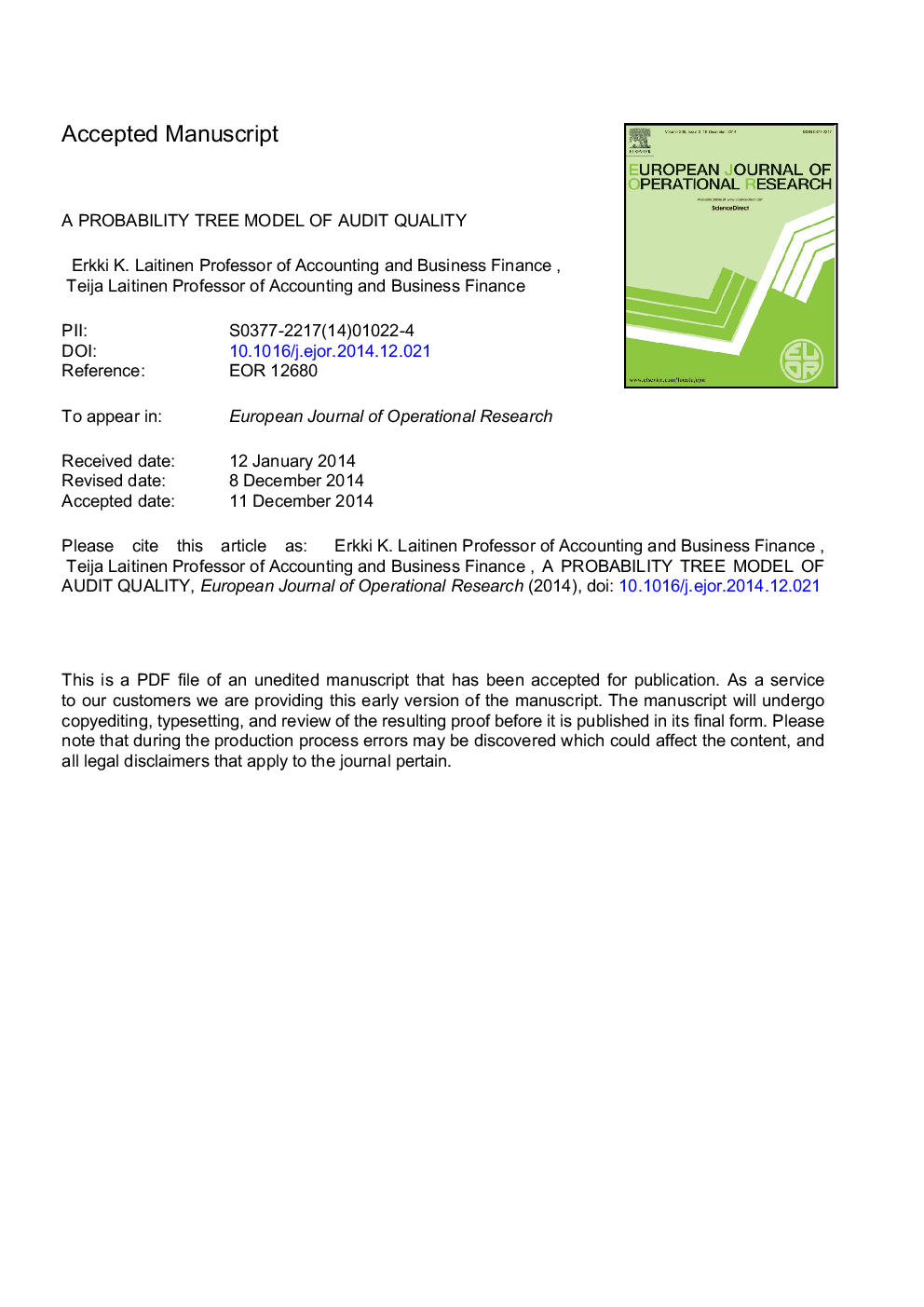| کد مقاله | کد نشریه | سال انتشار | مقاله انگلیسی | نسخه تمام متن |
|---|---|---|---|---|
| 6896840 | 1446007 | 2015 | 34 صفحه PDF | دانلود رایگان |
عنوان انگلیسی مقاله ISI
A probability tree model of audit quality
ترجمه فارسی عنوان
یک مدل درخت احتمالی کیفیت ممیزی
دانلود مقاله + سفارش ترجمه
دانلود مقاله ISI انگلیسی
رایگان برای ایرانیان
کلمات کلیدی
احتمال کاربرد مدل احتمالی درخت تصادفی، کیفیت حسابرسی احتمال تشخیص،
موضوعات مرتبط
مهندسی و علوم پایه
مهندسی کامپیوتر
علوم کامپیوتر (عمومی)
چکیده انگلیسی
There remains little consensus about how to define and formulate audit quality. It does not have a consistent definition and operationalization across studies and this has troubled theorists for many years. This study contributes to this discussion by introducing a probability tree model of audit quality. This model is built up of characteristics to create an association with the four sets of audit quality indicators; inputs, process, context, and outcomes (Knechel, W. R, Krishnan, G. V., Pevzner, M., Shefchik, L. B., & Velury, U. (2012). Audit quality: Insights from the academic literature. Auditing: A Journal of Practice & Theory 32(1), 385-421). The purpose is to show how these indicators interplay in the context of audit quality. The model describes the audit program of an audit engagement as a random tree model based on a stochastic process. Following Simon's (Simon, H. A. (1956). Rational choice and the structure of the environment. Psychological Review 63(2), 129-138; Simon, H. A. (1957). Models of man. Social and rational. New York: John Wiley & Sons) description of adaptive behavior the model describes an audit program as an organic procedure where an auditor does not maximize but is seeking for material misstatements (inadvertent errors) in a random environment. If the auditor under a budget constraint does not (in spite of positive inherent risk) detect any misstatement, the audit program will erroneously end with an unqualified report (false negative outcome). In this context, we measure subjective audit quality as the probability of the complement of this event (probability of detecting one or more misstatements). We also introduce a concept of perfect auditor with optimal characteristics. Finally, we measure objective audit quality as the relation of the complement event probabilities between the auditor and the perfect auditor. The analytical results are demonstrated by numerical examples.
ناشر
Database: Elsevier - ScienceDirect (ساینس دایرکت)
Journal: European Journal of Operational Research - Volume 243, Issue 2, 1 June 2015, Pages 665-677
Journal: European Journal of Operational Research - Volume 243, Issue 2, 1 June 2015, Pages 665-677
نویسندگان
Erkki K. Laitinen, Teija Laitinen,
